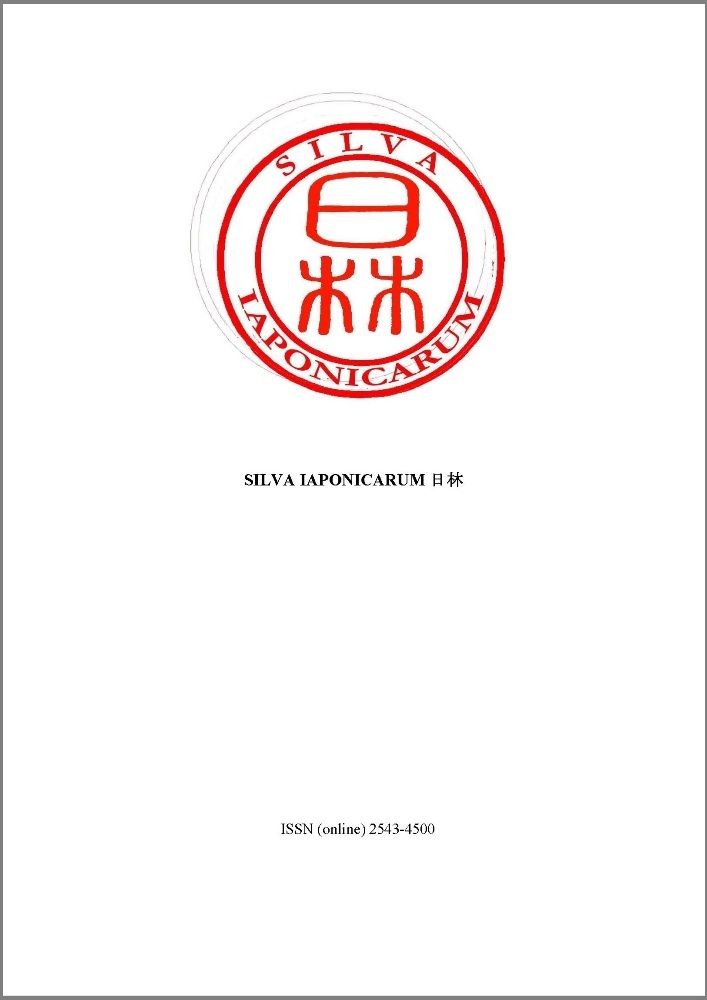Abstract
The paper examines the relations between three different visual media with inherent oral narration which have coexisted in Japan at the beginning of the 20th century – magic lanterns, silent cinema and kamishibai (paper theater). The figures of the oral narrators present in these three media, most notably represented by the benshi, are intertwined with each other and derive from a much older, transmedial storytelling practice, which in Japan became known as etoki. The author explores different roles and modalities of these three media, highlighting their performative aspects and examining the relations of power between all of their agents, including their socio-political background. They are also treated as representatives of a performative visual spectacle. Although the paper focuses on the local context of Japan, the media under discussion come across as significant for the evolution of both the local and international media landscape, fitting the methodology of media archaeology.
References
Bernardi, Joanne 2001. Writing in light: the silent scenario and the Japanese Pure Film Movement. Detroit: Wayne State University Press.
Borton, Terry 2015. “The professional life of ‘magic lantern’. Illustrated lecturers with introductions to most professionals performing from the 1890s to the 1920s”. The Magic Lantern Gazette 27 (1): 3–27.
Dym, Jeffrey n.d. “A brief history of benshi (silent film narrators)”. About Japan: A Teacher’s Resource. URL: https://aboutjapan.japansociety.org/content.cfm/a_brief_history_of_benshi [access date: 15 July 2021].
Fischer-Lichte, Erika 2005. Theatre, sacrifice, ritual. Exploring forms of political theatre. London/New York: Routledge.
Fischer-Lichte, Erika 2014. Rouledge introduction to theatre and performance. London/New York: Routledge. DOI: https://doi.org/10.4324/9780203068731
Freiberg, Freda 1987. “The transition to sound in Japan”. In: Tom O’Regan, Brian Shoesmith (eds). History on/and/in film. Perth: History & Film Association of Australia. 76–80.
Gage, Simon Henry, Henry Phelps Gage 1914. Optic projection. Principles, installation and use of the magic lantern, projection microscope, reflecting lantern, moving picture machine. Ithaca, New York: Comstock Publishing Company.
Gerow, Aaron 2010. Visions of Japanese modernity. Articulations of cinema, nation and spectatorship, 1895–1925. Berkeley/Los Angeles/London: University of California Press. DOI: https://doi.org/10.1525/9780520945593
Głownia, Dawid 2019. „Przekształcenia formy i funkcji pokazów latarni magicznej w XIX-wiecznej Japonii [transformations of form and functions of magic lantern shows in the 19th-century Japan]. Quart 4: 32–42.
Gunning, Tom 1990. “The cinema of attractions: early film, its spectator and the avant garde”. In: Thomas Elsaesser, Adam Barker (eds). Early cinema: space, frame, narrative. London: British Film Institute. 56–62. DOI: https://doi.org/10.5040/9781838710170.0008
Fujiki, Hideaki 2006. “Benshi as stars: the irony of the popularity and respectability of voice performers in Japanese cinema”. Cinema Journal 45 (2): 68–84. DOI: https://doi.org/10.1353/cj.2006.0016
Huhtamo, Erkki 2013. Illusions in motion: media archaeology of the moving panorama and related spectacles. London: The MIT Press. DOI: https://doi.org/10.7551/mitpress/9228.001.0001
Jarosz, Robert 2021. “W poszukiwaniu genealogii kina – skiagrafie i proces skiagraficzny [In search of the cinema genealogy: skiagraphiae and the skiagraphic process]”. Kwartalnik Filmowy 113: 27–49. DOI: https://doi.org/10.36744/kf.559
Kaminishi, Ikumi 2002. “Etoki, or deciphering pictures, of Buddhist propaganda”. Word & Image 18 (2): 192–209. DOI: https://doi.org/10.1080/02666286.2002.10404990
Kaminishi, Ikumi 2006. Explaining pictures: Buddhist propaganda and etoki storytelling in Japan. Honolulu: University of Hawaii Press.
Kinoshita, Chika 2011. “The benshi track: Mizoguchi Kenji’s The Downfall of Osen and the sound transition”. Cinema Journal 50 (3): 1–25. DOI: https://doi.org/10.1353/cj.2011.0025
Kusahara, Machiko 2021. “Utsushi-e Japanese magic lantern performance as pre-cinematic projection practice”. In: Joanne Bernardi, Shota T. Ogawa (eds). Routledge Handbook of Japanese Cinema. London/New York: Routledge. 177–197. DOI: https://doi.org/10.4324/9781315534374-11
Mair, Victor H. 2019. Painting and performance: Chinese picture recitation and its Indian genesis. Honolulu: University of Hawai’i Press. DOI: https://doi.org/10.2307/jj.13568097
Mannoni, Laurent 2000. The great art of light and shadow: archaeology of cinema. Translated by Richard Crangle . Exeter: University of Exeter Press.
Markus, Andrew 1985. “The carnival of Edo: misemono spectacles from contemporary accounts”. Harvard Journal of Asiatic Studies 45 (2): 499–541. DOI: https://doi.org/10.2307/2718971
McGowan, Tara M. 2010a. The kamishibai classroom: engaging multiple literacies through the art of “paper theater”. Santa Barbara, California: Libraries Unlimited. DOI: https://doi.org/10.5040/9798400675393
McGowan, Tara M. 2010b. “Manga Kamishibai by Eric Nash. A review”. Kamishibai for Kids. URL: https://www.kamishibai.com/store/NashReview.pdf [accesss date: 15 July 2021].
McGowan, Tara M. 2015. Performing kamishibai. An emerging new literacy for a global audience. New York/London: Routledge. DOI: https://doi.org/10.4324/9781315724065
Omori, Kyoko 2021. “Inter-mediating global modernity. Benshi film narrators, multisensory performance, and fan culture”. In: Joanne Bernardi, Shota T. Ogawa (eds). Routledge Handbook of Japanese Cinema. London/New York: Routledge. 198–212. DOI: https://doi.org/10.4324/9781315534374-12
Orbaugh, Sharalyn 2015. “Propaganda performed. Kamishibai in Japan’s Fifteen Year War”. Japanese Visual Culture 13: 37–56. DOI: https://doi.org/10.1163/9789004249448_004
Ruch, Barbara 1977. “Medieval jongleurs and the making of a national literature”. In: John W. Hall, Takeshi Toyoda (eds). Japan in the Muromachi age. Berkeley/Los Angeles/London: University of California Press. 279–309. DOI: https://doi.org/10.1525/9780520325531-024
Saka, Chihiro 2013. Mediating between the religious world and the masses: picture deciphering by the itinerant nuns of Kumano. University of Victoria.
Tokita, Alison 2008. “Performance and text: gender identity and the Kumano faith”. Intersections: Gender and Sexuality in Asia and the Pacific 16: 1–17.
License
Copyright (c) 2023 Robert Jarosz

This work is licensed under a Creative Commons Attribution 4.0 International License.


